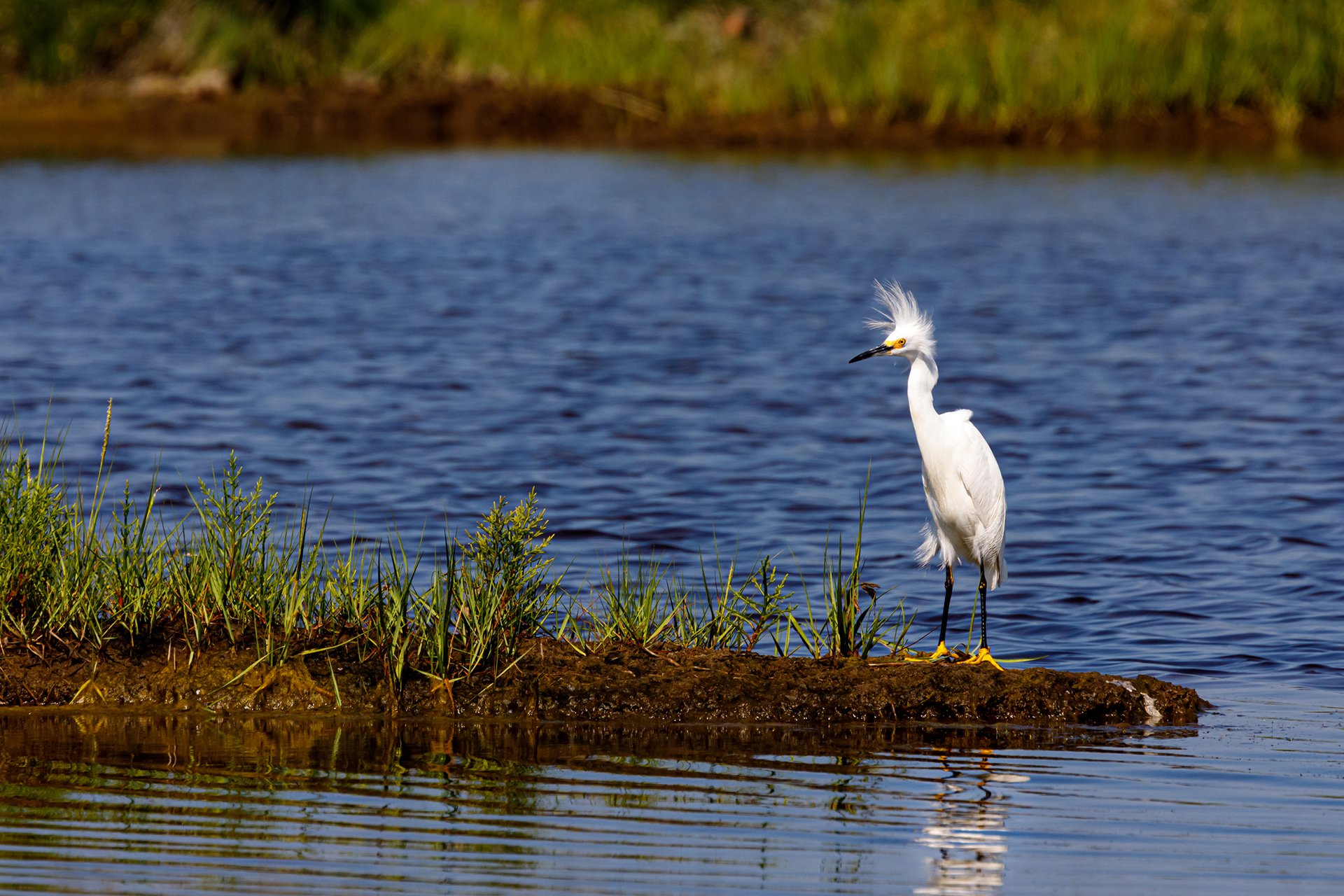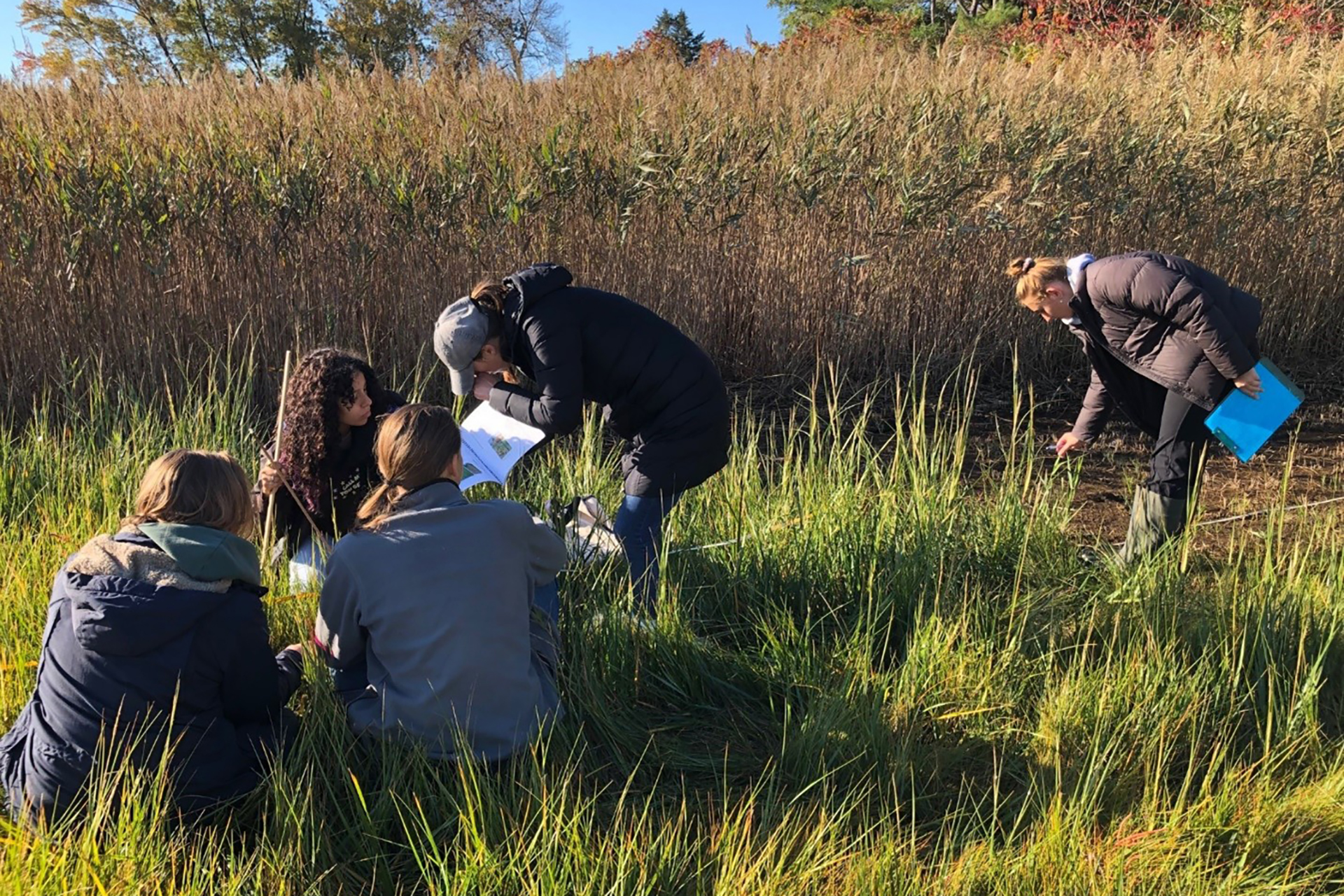Joppa Flats News
Students Study the Effects of Climate Change on North Shore Salt Marshes
August 21, 2024
Since 1996, students in grades 5-12 on the North Shore have been working with Mass Audubon to learn about the relationship between salt marshes, the invasive common reed (Phragmites australis), and climate change.
What is the Common Reed?
The Common Reed (Phragmites australis) is an invasive plant that grows in marshes and other wet areas. Despite its name, it is believed to have originated in Europe in the 19th century but can now be found across the United States.
While there is also a native subspecies of common reed, Phragmites americanus, Phragmites australis is the subspecies most likely to be found in Massachusetts. It outcompetes other plant species in the area for space, creating a monoculture of common reeds. Phragmites australis is topped with feather-like seed pods, and seeds easily travel on the wind. This seed dispersal method makes eradication quite challenging.
Despite its status as a non-native species, Phragmites australis does provide food (seeds) and habitat (nest material, shelter) for some bird species. Its dense root structure can help prevent erosion, although native water-tolerant plant species that it has displaced do this also. The dense monoculture of Phragmites australis serves as an ideal breeding ground for mosquitoes and reduces habitat for native fish and wildlife populations. Managing this species via mechanical removal, burning, and/or chemical treatment is difficult, costly, and often does not result in long-term control. In sensitive ecological areas, some efforts to periodically remove or reduce are effective in the short term only; its presence is something that natural resource managers grapple with perpetually.
Salt Marsh Science Program Investigates
Students involved in the Salt Marsh Science program know all about the relationship between salt marshes, Phragmites australis, and the impacts of climate change such as sea level rise.
Salt marshes provide flood control and critical habitat for fish, migratory birds, and other wildlife. Like a sponge, they protect inlands from sea level rise and increasing storm surges. Understanding the interconnected relationships that sustain this vital habitat is essential for effectively navigating the impacts of climate change. That is where the students in our Salt Marsh Science program come in. Together, students and teachers:
- Monitor the growth and range expansion of the common reed in salt marshes.
- Study the effect or salinity levels (salt content) on the growth of salt marsh vegetation.
- Assess the impact of tidal restrictions, such as bridges and culverts, including sampling fish populations above and below the restrictions.
The data collected helps scientists understand how the salt marsh is responding to change. The Salt Marsh Science program is the Schoolyard Science component of the National Science Foundation-funded Plum Island Ecosystem Long Term Ecological Research (PIE LTER) project, which is coordinated by the Marine Biological Laboratory and involves academic scientists from a variety of local universities.
How is the Salt Marsh Being Affected by Climate Change?
So, it was up to the Salt Marsh Science program to find out how climate change impacts the salt marsh, and what role the invasive common reed plays in this critical habitat.
Salt marsh plants adapt to living in an intertidal zone, where salt water from the tides cover them twice a day. Rising sea level increases the amount of time the plants are submerged in salty water, sometimes beyond a threshold in which can survive. As sea level continues to rise, salt marshes migrate inland, and plant composition changes. The low marsh species move further back and take over areas that used to be high marsh. In response to that, the high marsh species encroach even further on banks and hills. Sometimes those species then take over other habitats, such as low-lying maritime forests, in response to their changing ecosystem.
This retreat becomes an issue when marsh species run into Phragmites australis. As mentioned, the common reed roots are extremely dense and deep, leaving no room for native marsh plant roots to move in and grow. If there is nowhere for the native marsh species to migrate to, they may perish in response to sea level rise. However, Phragmites australis itself has its own threshold of tolerance for salt water. Understanding how it may die back, and retreat is also of paramount interest.
Hope for the Salt Marsh
With this information, we can make better-informed decisions about mitigation and land management. The Salt Marsh Science program contributes invaluable long-term data, generates partnerships between scientific organizations and schools, and gives students firsthand experience in the field of environmental science.
As our climate continues to change, we will need more well-trained ecologists and habitat managers to respond to the threats of sea level rise and increasingly strong storms. Thankfully, the future scientists in the Salt Marsh Science Project are gaining firsthand experience by studying this complex issue.
Review the project’s data so far and find out how you can get involved today.




